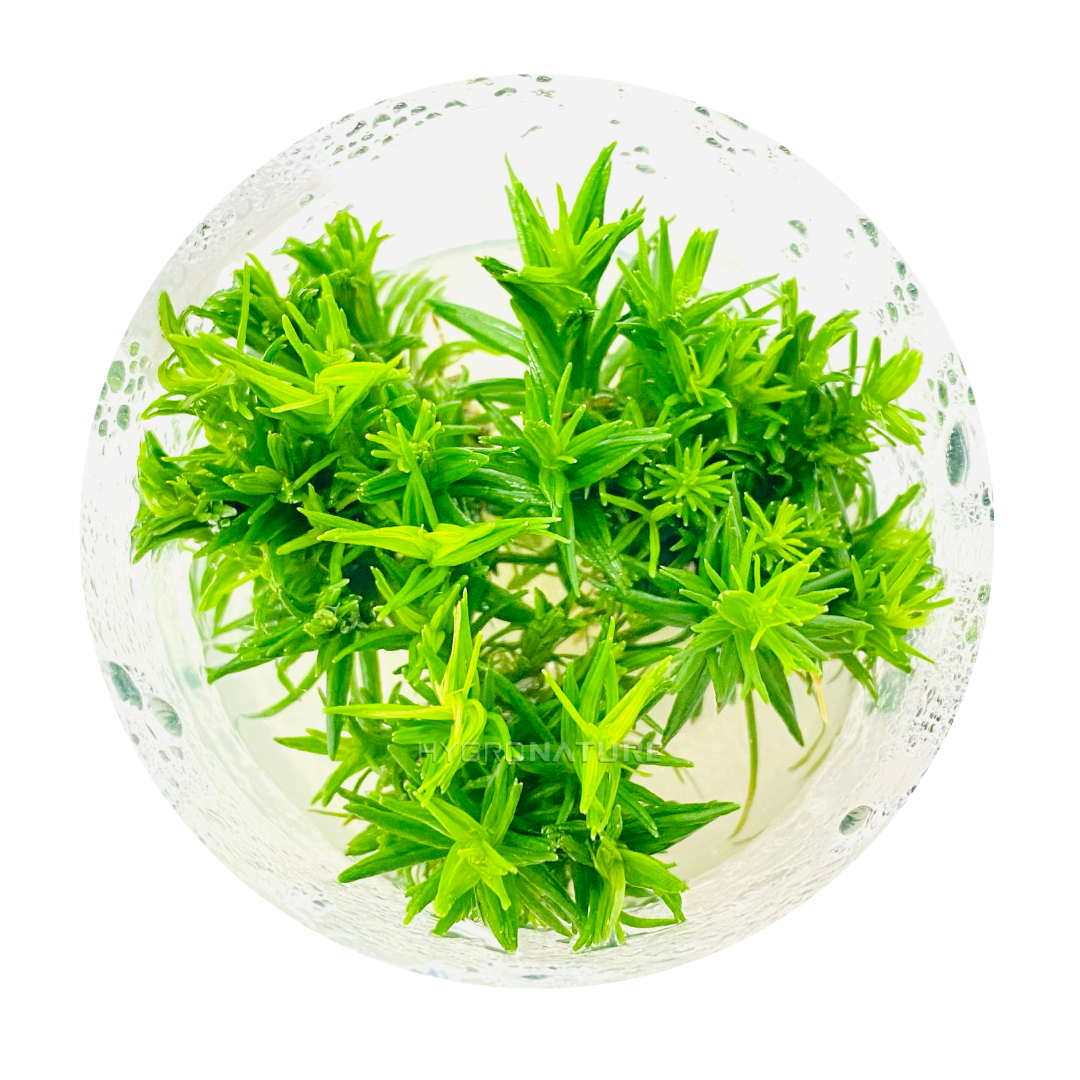30 Days Returns On Supplies Excluding Live Plants
4 Payments Installments at Checkout
Agotado
No se pudo cargar la disponibilidad de retiro
Descargo de responsabilidad:
Descargo de responsabilidad:
Las imágenes y los vídeos no son las plantas reales que recibirá, sino una representación de muestra.
¿Plantas de cultivo de tejidos?
¿Plantas de cultivo de tejidos?
actualizando
PEST FREE

Tissue Culture plants will not introduce snails, planeria, hydra or other pest into aquariums – no nasty surprises.

ALGAE FREE

It only takes one spore of algae to be present on a plant to introduce it to a tank. Aquarium Tissue Culture Plants are guaranteed algae free.

PESTICIDE FREE

No pesticides are used in the growing of Aquarium Tissue Culture Plants. This makes them especially suited for use in Nano tanks which contain invertebrates such as shrimps and snails – did you know that shrimp and snails are 100 times more susceptible to the effects of pesticides than

VALUE IN EVERY CUP

In general depending on plant type you will receive multiple plants in every cup which means the cost per plant stays Low.

PRESERVE THE NATURE

The aquatic plant industry has been growing rapidly which requires a supply of plants on a large scale. The natural habitats of many of aquatic plant species are shrinking as a result of exploitation and rapid depletion of natural habitats. As a result, most of the aquatic plants are under threat of extinction. Thus, Tissue culture has made a significant contribution for propagation and cultivation of plants suitable for industry while conserving aquatic plants in these natural

CLEARLY IDENTIFIED

Each plant comes in a specially marked pack with common and scientific names, along with handy information such as how tall it will grow, ideal pH and temperature, lighting requirements and even a guide to skill

EASY TO PLANT AND GROW

These plants take only minutes to introduce to a tank – simply remove them from the pack, wash carefully under a tap, and plant! It’s easy. And unlike many bunch plants, these plants already have established roots, so they will settle quickly into your tanks.
Pogostemon erectus is a very striking plant with coniferous leaves that almost looks like a Christmas tree in your aquarium. Originally collected from the state of Maharashtra in western India, although fairly new to the hobby, it has exploded in popularity in Europe and North America due to its distinctive appearance, bright green color even in high light, and predictable upright growth habit. It used to be confused with Rotala verticillans because of the similarities in their borne forms, but the two are very different plants at birth. Compared to its relative Pogostemno stellatus, this plant is slightly narrower and its leaves appear "sharper". It is suitable for the background, although (like almost all stem designs) it is a bit short due to strong lighting, making it suitable for mid-range or even foreground of high-tech tanks. It is quite a striking plant and makes a great focal point in a waterscape. Pogostemnon erectus looks best if it is pruned frequently as it promotes bushy growth. After cutting, buds appear near the cut, and where there was only one before, several different shoots are born. Therefore, this plant is quite easy to grow into a thick, lush bush that is an absolute sight. It's a great addition to tanks with red plants as its distinctive green hue creates quite a dramatic contrast and can really help make your aquarium much more colorful! Some evidence suggests that this plant does not like very rough water, although it occurs naturally in brackish water environments, suggesting that it is quite adaptable and can adapt to most water conditions. However, this plant is easiest to grow in moderately soft water (most city tap water is fine). Pogostemnon erectus is an excellent root feeder - like all aquatic plants, it can extract nutrients from the water column, but prefers to obtain many nutrients from the substrate. That is why we recommend using a fertile substrate or supplementing it with root strips. This plant really comes alive when it's in rich soil, which can help it adapt and thrive even in less-than-ideal situations, like very rough water. Although not absolutely necessary, adding CO2 is highly recommended to get the most out of this plant. As with all aquatic and terrestrial plants, the lack of CO2 can be detrimental to oxygen. Moderate to strong lighting is also recommended. The stronger the lighting, the denser this plant grows. It also lasts quite a while under bright light. Pogostemnon erectus can certainly be grown in low tech tanks - especially Walstad type systems with a very rich substrate that can replace or at least alleviate some of the low CO2 problems. Like almost all plants on our list, Pogostemno erectus can be grown in marshes and habitats. It takes on a much more compact growth form closer to the ground and produces quite complex flowers..
Compartir
SKU:PETC
Ver todos los detalles


